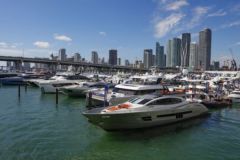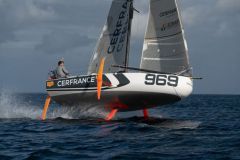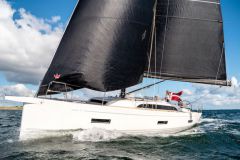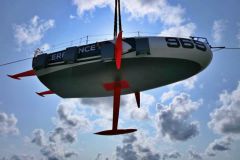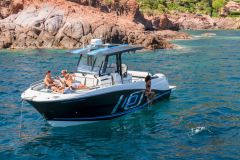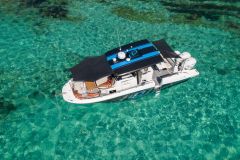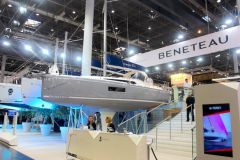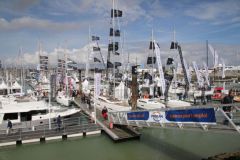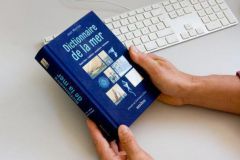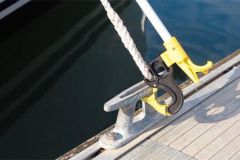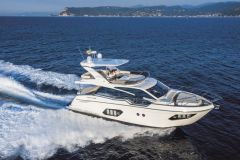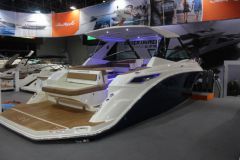Dynamic Stabilty Systems (DSS). Architect Hugh Welbourn has been developing the famous patented DSS system for over 10 years. It is a retractable hydrofoil that when deployed downwind generates a vertical thrust that increases the boat's righting torque. This gives the effect of an extra full crew to the recall, in the lines, to the wind or to a heavier keel, but without increasing the weight of the whole, which increases the performance exponentially. The DSS foil now equips a wide variety of racing yachts from the repeat winner of the Rolex Sydney Hobart, Wild Oats XI, to Infiniti racing cruisers, sportsboats, Mini 6.50s etc.
The Quant 23, a flying boat
Now the DSS foil also provides vertical thrust, which combined with a T-shaped foil on the Quant23's rudder, allows it to fly completely above the water. The Quant23 is the first boat to be tested with the new foil and the latest DSS sportsboat designed by Hugh Welbourn for QuantBoats, the Swiss shipyard that builds the Quant28 and Quant30. Michael Aeppli of QuantBoats explains: "Today the QuantBoats team is the most experienced in producing DSS equipped sailboats. Having spent a lot of time sailing these DSS boats, we knew there were many other positive aspects to DSS, which led us to dream of flying for example. Those who sailed on the Quant28 could feel that we were not far from it, even if the boat was not designed for it. And then 'flying' became the norm after the 2013 America's Cup."
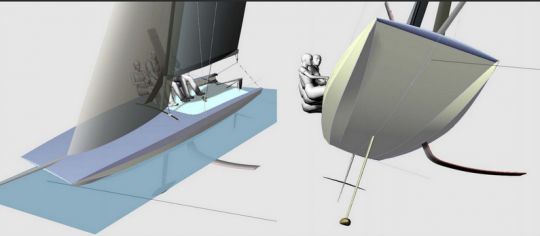
To verify that the Quant 23 could fly, tests were carried out at the beginning of June in Cowes, a port on the Isle of Wight. And indeed, the hull started to take off, before flying on the water. The Quant 23 is a true foiler (with a fixed keel) and differs greatly from a Moth or an AC72. While the latter are racing boats requiring physical effort, skill and training, the Quant 23 can be used by anyone. "The idea is simply a boat that anyone can step on and fly 10 minutes later" explains the architect.
"With the Quant23, the goal was not to create the fastest boat, but the easiest boat to fly in all stability, bringing a lot of fun, and great speed in most conditions. For us, this means that the boat should do 90% of the work, not the crew, which is mainly the case with other flying boats we see today, with complicated systems to manage, optimize and maintain all the time adds Aeppli.
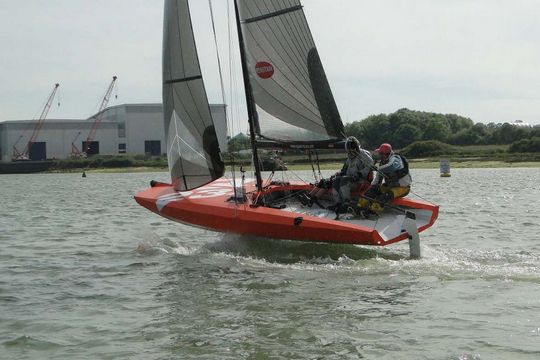
To achieve this performance, the new DSS foil is extremely stable compared to the inverted T configuration of the Moth, for example. This new foil, Welbourn confirms, favors a fast takeoff (flying with as little wind as possible) rather than high top speeds, which would require a smaller foil with a less powerful profile. "It's about finding the right balance to fly a three-person crew and a keelboat with a 60 kg keel bulb without any problems." says Welbourn. And he adds that this new generation of boats can be adapted to larger boats, within the limits of physics of course. While its ability to fly is the Quant23's primary selling point, it also has a rather futuristic look, with a scow hull and very low freeboard, a truncated bow for maximum forward volume, a long live chine and a slanted liveab. This powerful and stable hull, Welbourn says, allows the boat to do without ladders or other such complicated devices, making it easier to build and sail. You don't even have to move the crew back and forth to change the angle of attack of the foil: "We were able to see that we don't even have to play with the boat's trim actually."
In terms of performance, even if it is still too early to tell, the Quant 23 can fly comfortably on the beam (broad and short beam) at 20 knots, but is also capable of flying upwind at 10 knots. " Since day one, we've managed to fly upwind, in little wind, and that's also why the foils are so long."

